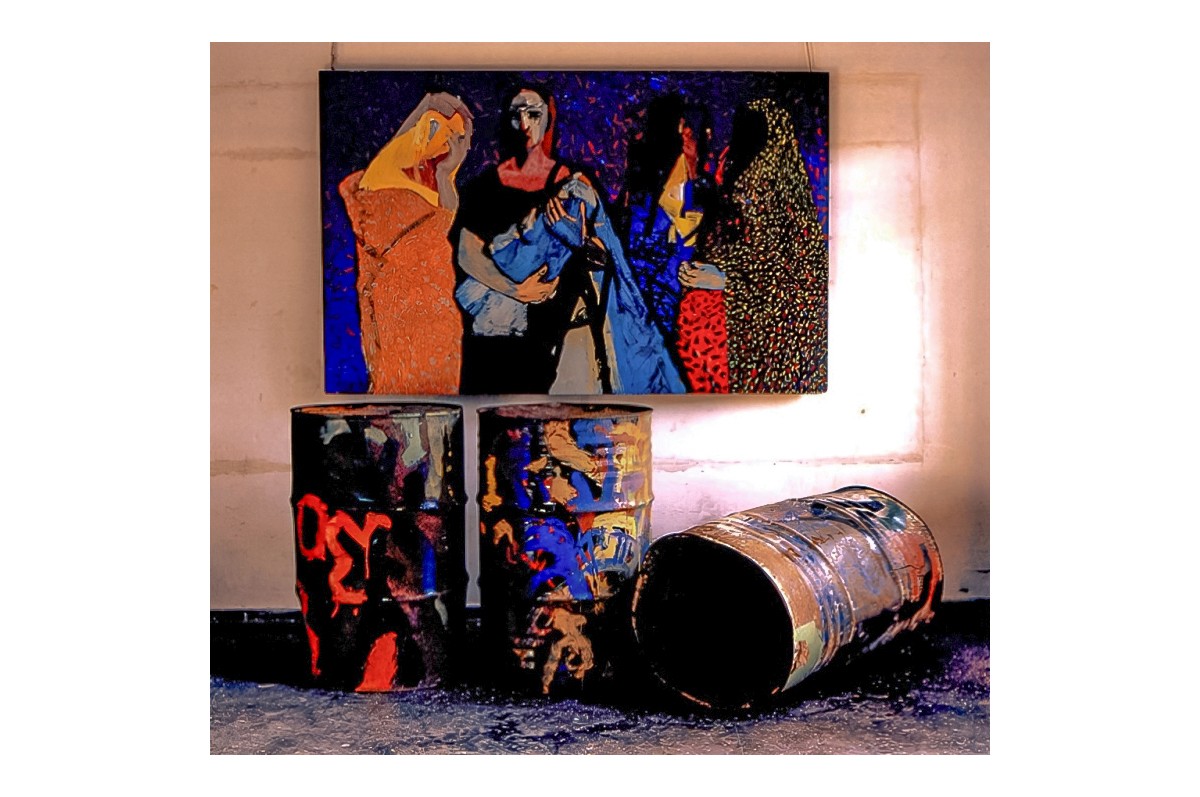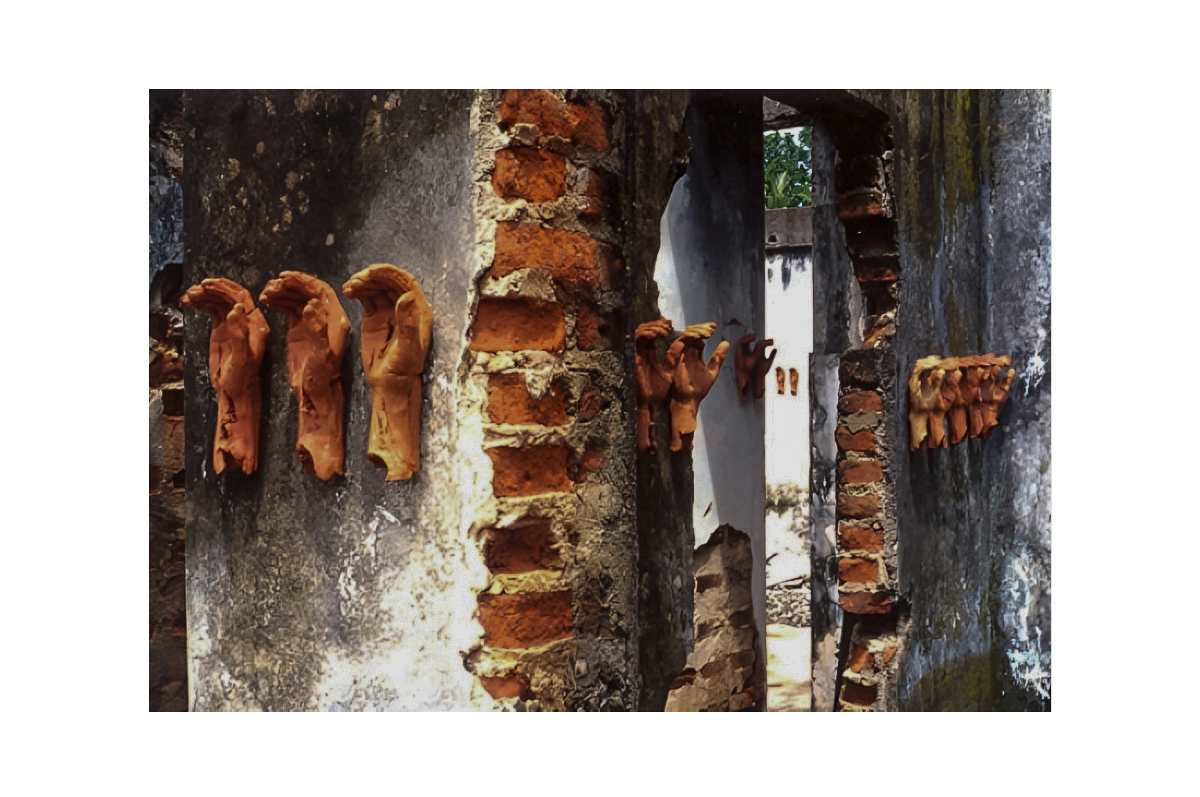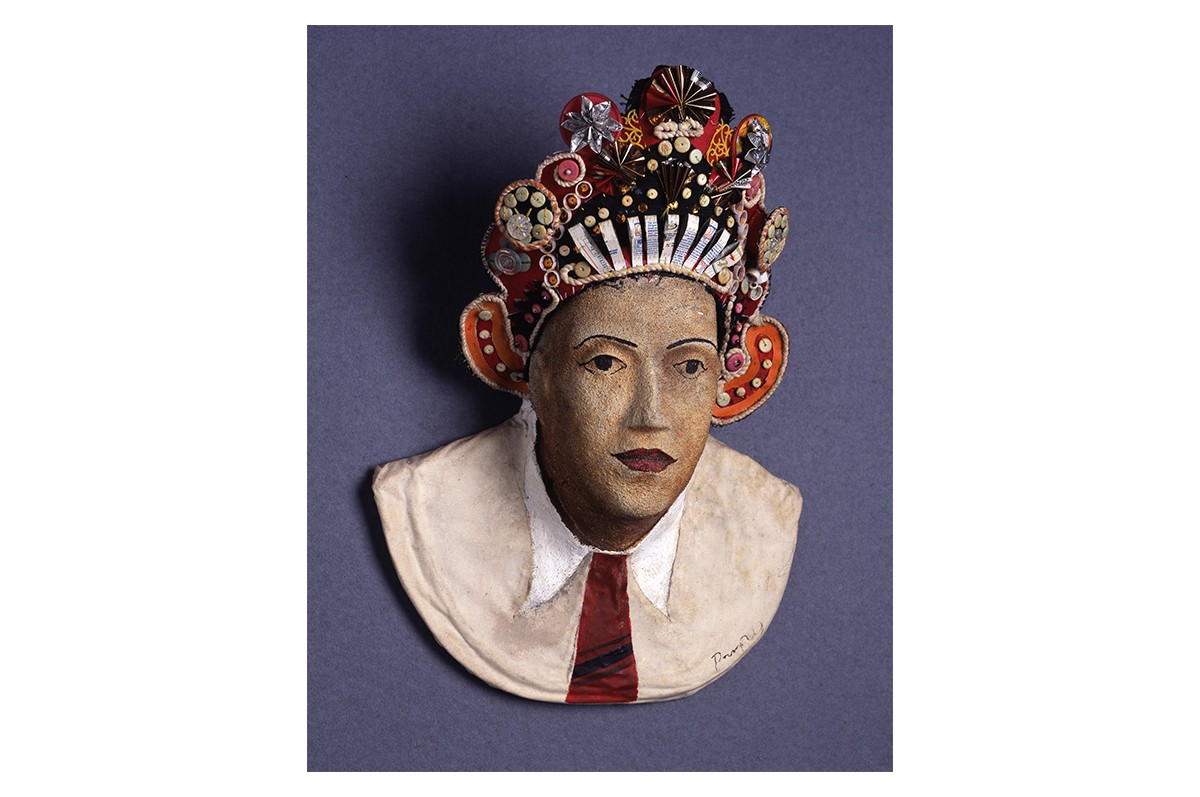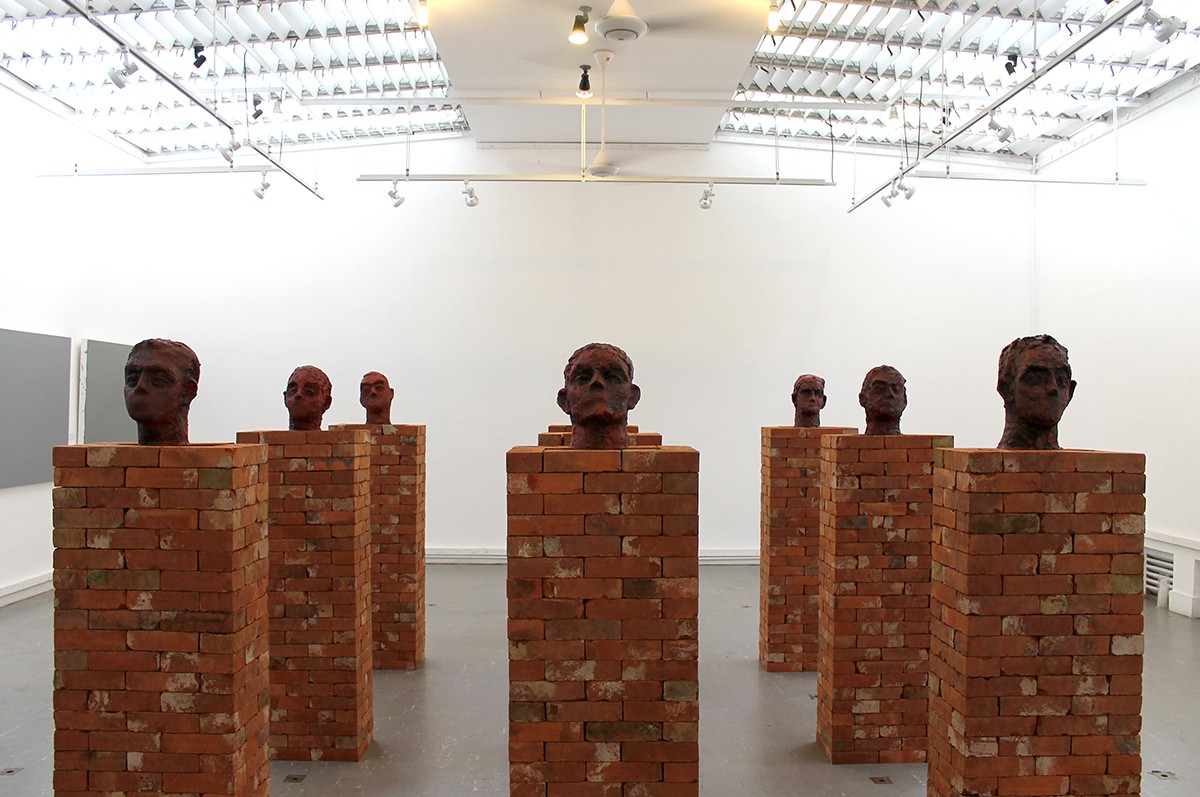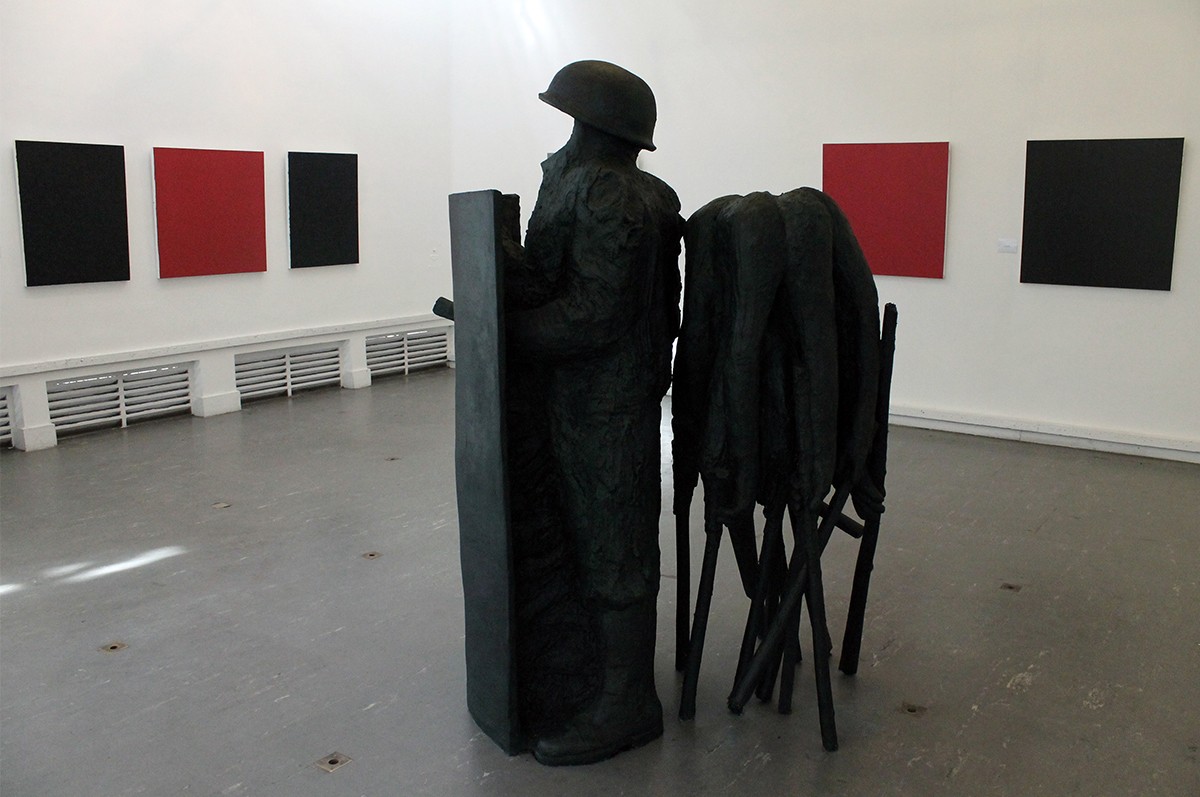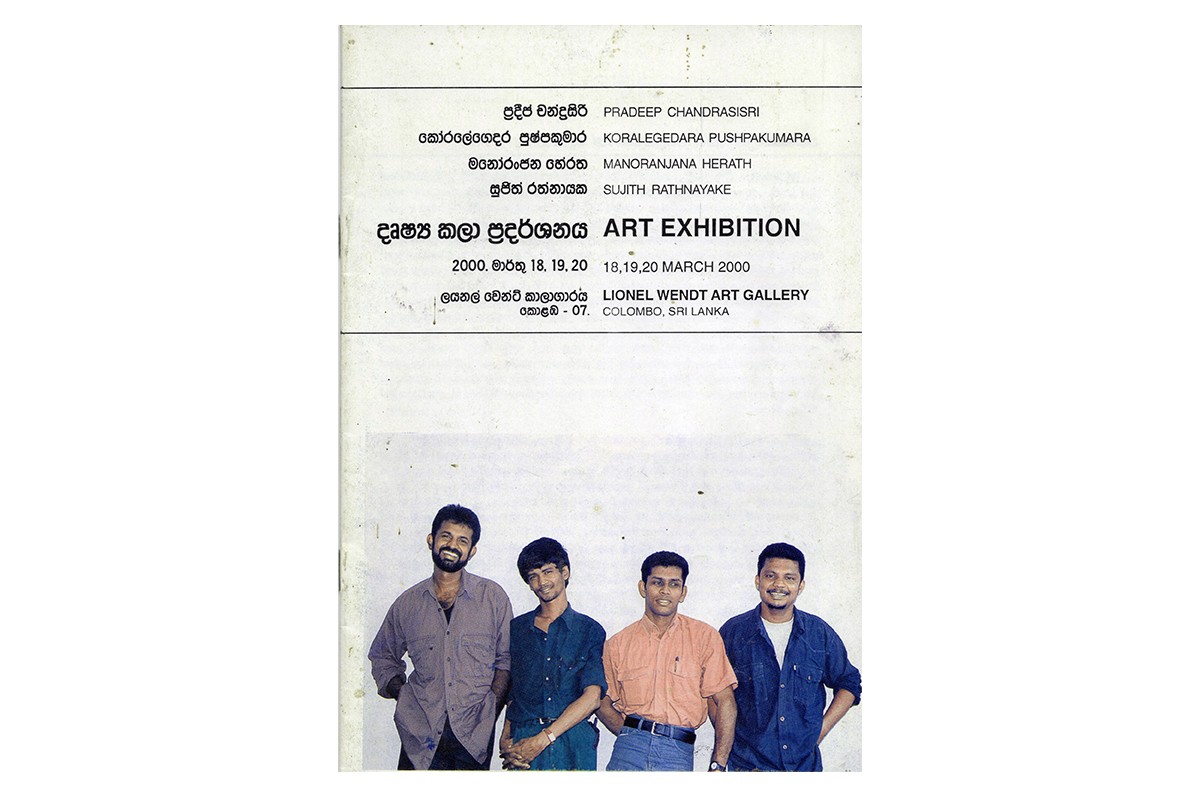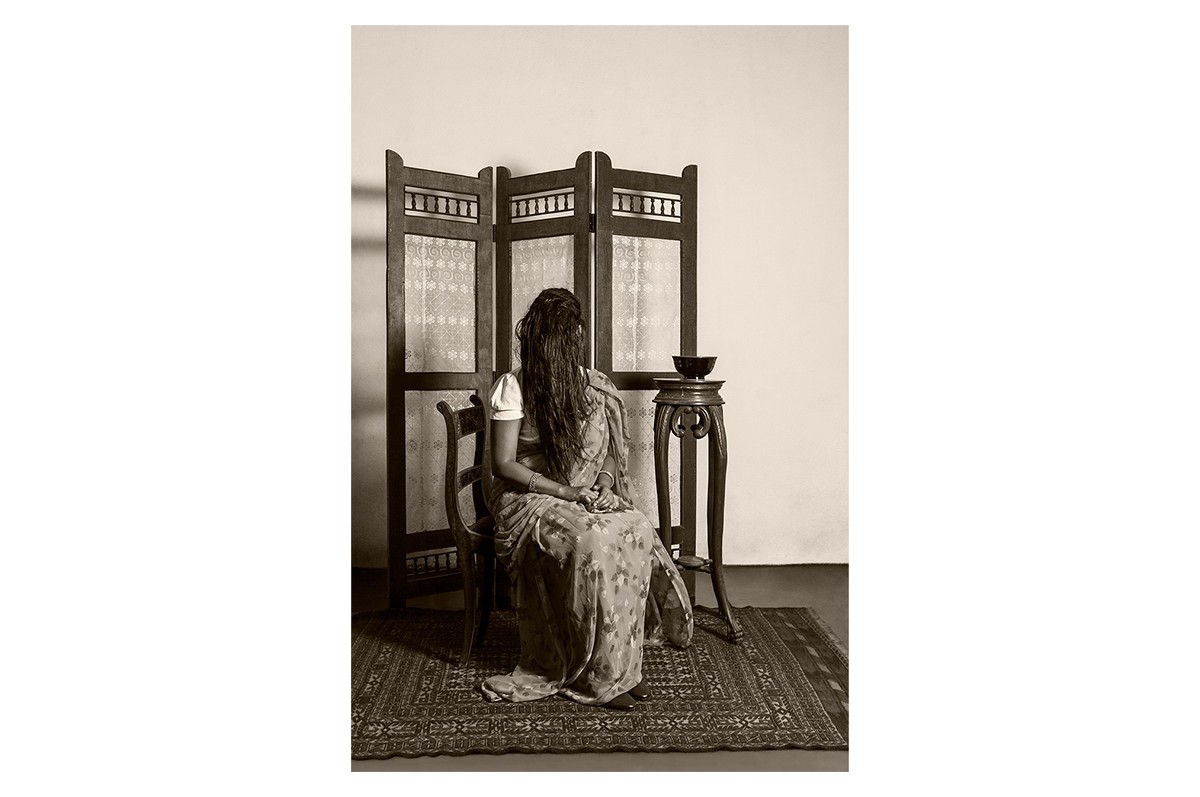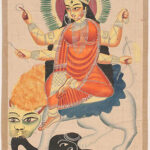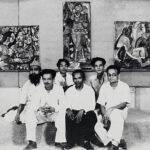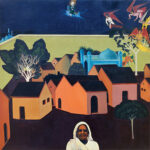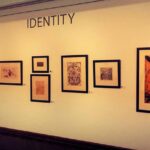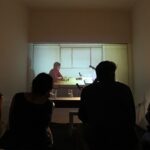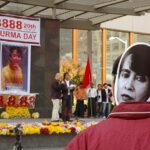The 90s Trend Emerges in Sri Lankan Art
1990–2000
Internal armed conflict in Sri Lanka intensifies in the 1980s, with the outbreak of the Sri Lankan Civil War (1983–2009) between the government and the separatist group Liberation Tigers of Tamil Eelam (LTTE), and the 1987–89 insurrection by the Marxist political party and militant organisation Janatha Vimukthi Peramuna.
Artists’ responses to these developments, often referred to as the 90s Trend, are largely anti-government and criticise the state’s weaponisation of nationalist and Sinhalese ethnic identity against the Tamil minority and socialist groups, including the institutional bias towards Sinhala over Tamil. The 90s Trend, spearheaded by many of Sri Lanka’s best-known contemporary artists such as Jagath Weerasinghe, Pradeep Chandrasiri, Koralegedara Pushpakumara, Pala Pothupitiya, Anoli Perera and others, sees artists experimenting with conceptual art, installations and performance to better embody the socio-political and cultural discourses of their time. Perera in particular is the leading feminist voice of the movement.
The 90s Trend also has a major impact on art education in Sri Lanka. Many of the movement’s best-known artists are alumni of the country’s colonial-era Institute of Aesthetic Studies (present-day University of the Visual and Performing Arts) and were active in student protests at the institute. However, frustrated with the academic and linguistic barriers to advancement at the institution, artist Chandraguptha Thenuwara founds the Vibhavi Academy of Fine Arts in 1993 as a more politically conscious and pedagogically progressive alternative to the IAS. Students are allowed into the Vibhavi Academy without the prerequisite of academic qualifications, and the focus of the institution is emphatically practical, including support for student and alumni exhibitions.
The period also sees an increase in available art spaces for alternative viewpoints, such as the Heritage Gallery founded by Ajitha de Costa and 706 Gallery (now Barefoot Art Gallery), founded by Dominic and Nazreen Sansoni, both of which provide a platform to activist-artists of the time.
Bibliography
Dhar, Jyoti. “Jagath Weerasinghe: States of Psychosis.” ArtAsiaPacific, August 23, 2017.
The Glasgow School of Art. “Chandraguptha Thenuwara.” Vimeo. April 2, 2013. Audio, 1:29:31. https://vimeo.com/63155667.
Perera, Anoli. “Collectivism in the Contemporary Sri Lankan Art: The History of an Unusual Case of Artists.” In Intersections of Contemporary Art, Anthropology and Art History in South Asia: Decoding Visual Worlds, edited by Sasanka Perera and Dev Nath Pathak: 271–96. Cham, Switzerland: Palgrave Macmillan, 2019.
Thenuwara, Chandraguptha. “Contemporary Art in Sri Lanka.” Südasien 40, no. 2 (2020) 7–11. https://doi.org/10.11588/sueas.2020.2.21102.
Feedback 
This entry appears in
Art in South Asia
Visit Timeline
Associated Timeline Events
First Published: March 11, 2024
Last Updated: August 17, 2024



